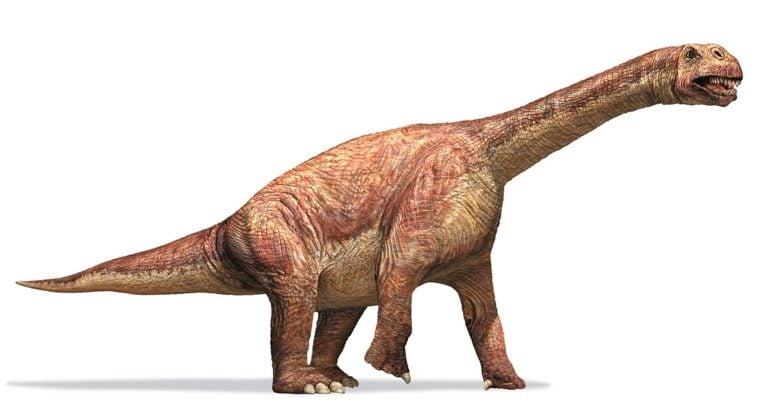
A new study suggests that sauropod dinosaurs had some special bones that gave them a boost during hard times. This boost came in the form of hollow “skin bones” called osteoderms, which stored important minerals to maintain the animal’s huge skeletons and to help them lay large egg clutches. This comes in very handy for the long-necked plant-eaters, since we know that their environment was highly seasonal and semi-arid. The dinosaurs were often exposed to droughts that caused massive die-offs. Being able to store extra minerals to ensure large clutches is one factor that may have given them an edge against the climate. We’ve known about these bones for over a century, but have had no idea what they might have been used for.
Osteoderms are dermal bone structures that support the upper layer of skin and provide protection against the elements in a large variety of living and extinct organisms, especially reptiles.
Guelph biomedical scientist Matthew Vickaryous co-authored a paper published in Nature Communications about two sauropod dinosaurs, one an adult and the other a juvenile, found in Madagascar. They found that these bones provided an extra source of calcium and phosphorus when environmental and physiological conditions were tough. The bones are described as resembling footballs that have been sliced in half and they are about the size of a gym bag in the adult. As of right now these bones are the largest osteoderms ever identified. The adult’s osteoderm was hollow, which he attributes to extensive bone remodeling. More on that in a bit.
This is an important find because although osteoderms were common in armored dinosaurs and are even common in animals today, like alligators (They create that ridge pattern on the Alligator’s back), and armadillos, these bones were rare among sauropod dinosaurs and have appeared only in titanosaurs.
These new osteoderms were found along with the two skeletons. Where the adult specimen was hollow, the juvenile osteoderm was solid and did not show evidence of remodeling. This suggests that as the animals grew, osteoderms became more important mineral stores for the body, which makes sense. Young animals aren’t likely to need those extra resources.